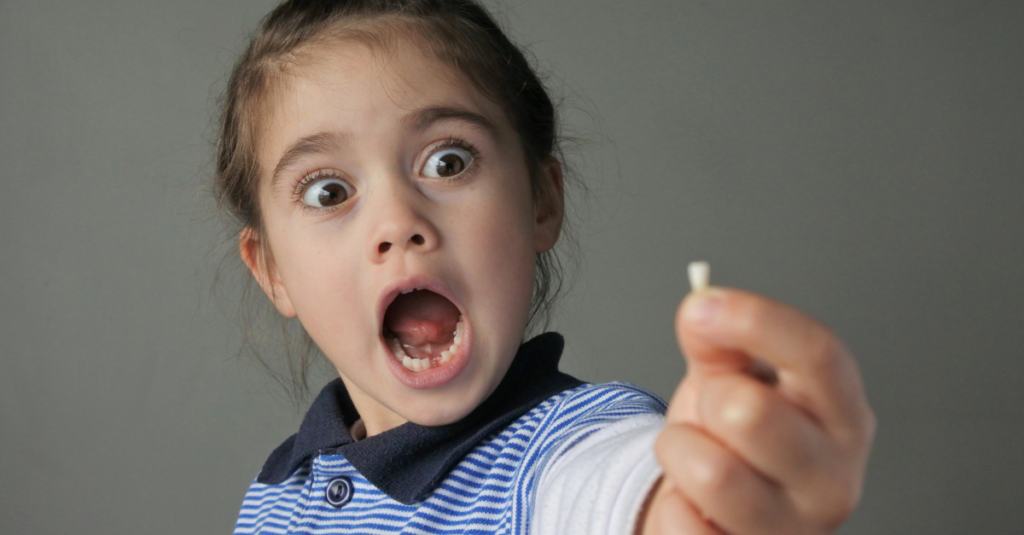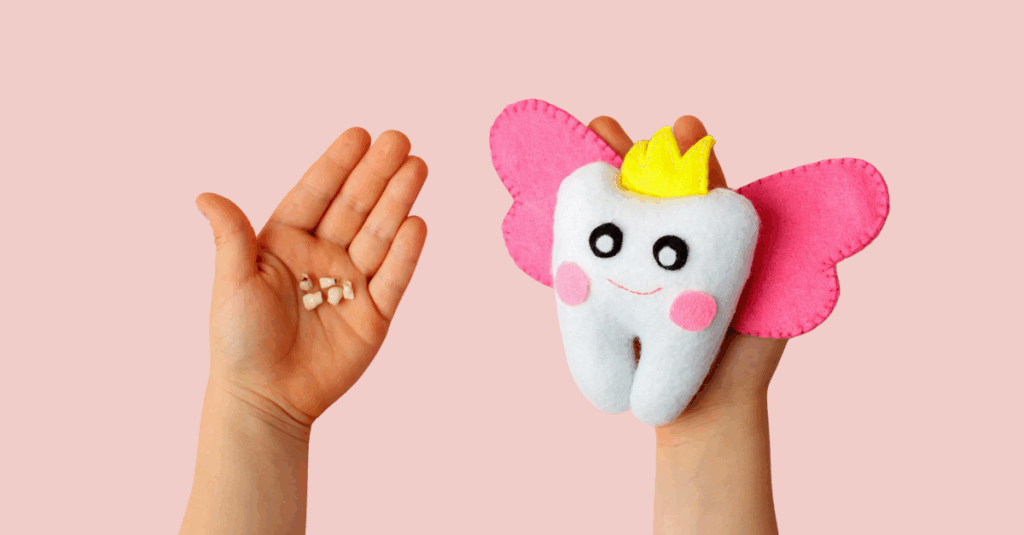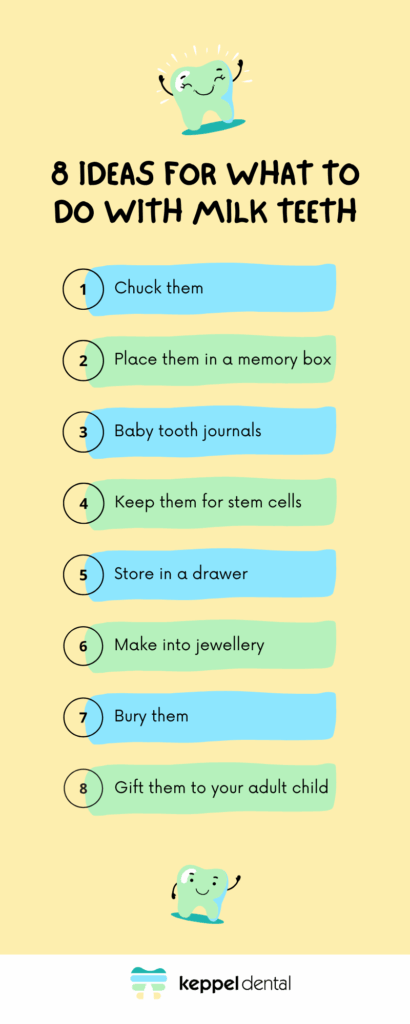
And a look at the tradition of keeping milk teeth
You’ve spent years trying to get your child to brush their teeth. And right when it was starting to get easy, your child (proudly) shows you that they’ve got their first wobbly tooth. Given how much they’re playing with it, you know it’s going to fall out any moment now. You’ve got the tooth fairy’s first visit sussed. But you’ve not thought about what you’ll actually do with the milk tooth. Should you keep it? Are you a monster if you bin it? (Answer: no.) If you do keep your child’s milk teeth, where or how should you store them? And to what end?
If this parenting quandary has got you scratching your head, understanding the traditions around keeping baby teeth may help. Along with some real-world ideas from parents who’ve already met this milestone.
A short history of keeping milk teeth
The origins of keeping milk teeth are hard to pin down. They may date back to the Vikings. Warriors went to battle wearing milk teeth jewellery to bring them good luck and ward off evil spirits.
Belief in the protective powers of baby teeth was still alive in early Europe and at the time of the witch trials. People buried or burned milk teeth to protect themselves against the occult. The practice of burying teeth survives today. In some parts of the world, milk teeth are buried in the belief that this helps the child’s big tooth grow strong and healthy. (But we advise supporting that belief with these practical ways to care for your child’s tooth.)

Why today’s parents keep milk teeth
In 2020 health company DentaVox surveyed 330 parents about milk teeth and what they did with them.
Interestingly, 72% of those surveyed said their parents didn’t keep their milk teeth. Fifty-five percent of those people said they regretted that. So, did regrets about not keeping their baby teeth influence what these people did with their child’s milk teeth, now that they were parents?
- A huge 59% hid them, keeping them as keepsakes or for stem cell collection.
- The 2 top reasons for keeping teeth were: family traditions (30%) and making children happy (16%).
The 23% of surveyed parents who binned their children’s teeth did so because it was:
- the most practical solution (26%)
- the most hygienic solution (23%)
- in line with family traditions (18%).
So now we’ve got some insight into what caregivers are doing with milk teeth. But to learn more about why people keep or bin them, we turned to social media.
We asked around on Facebook and amongst friends and found that many people don’t really know why they keep their kids’ teeth. Responses included:
“Mine all got chucked, yet I still keep [my little boy’s] teeth and I don’t know why?”
“I keep them in a matchbox like my mum did.”
“I’ve no idea why I kept [my son’s] teeth. Just a thing my mother did and probably hers before her. Links to the past are often a way of remembering.”
Sentiment and tradition seem to be at the heart of ‘why’ we keep baby teeth, even if they eventually end up in the bin.
8 ideas for what to do with milk teeth

Choose what works for you and your family. No one’s judging (or even looking).
1. Chuck them
A sizeable percentage of the surveyed parents chose this option. And when we asked the question on social media, this was a resounding answer from a lot of mums and dads. If you throw them in the bin to go to “tooth heaven” (as one parent called landfill) don’t feel bad. You’re definitely not alone.
2. Place them in a memory box
You may already have a memory box for your child. Perhaps it includes a lock of hair from their first trim, your hospital bands and photos. Bag or box your child’s tooth and add it to the memories.
Alternatively, you could invest in a dedicated first tooth box. Some of these can be quite fancy, made from solid silver, others are simpler, small wooden boxes. Parents also told us they used:
- satin bags
- match boxes
- empty camera film canisters
- small, decorative porcelain pots
- old hardboiled lolly or mint tins. (The irony is not lost on us.)
3. Baby tooth journals
Want something a bit more formal than a pot? Then you might prefer a tooth fairy journal, like this one from UK Etsy seller Journals For Kids. The pages provide prompts for your kiddo to document the loss of each tooth and keep any letters they get from the Tooth Fairy. Keeping a journal like this is a great way to help your child understand which teeth they’ve lost. Especially if you couple it with a milk tooth chart or keepsake box.
4. Keep them for stem cells
You’ll find plenty of references to keeping milk teeth for their stem cells. The claim is that baby teeth can be useful if your child develops medical conditions such as type 1 diabetes, heart disease and even Alzheimer’s. But the science-backed reality of this is complicated.
While the pulp of baby teeth is rich in stem cells, how they can be used therapeutically or effectively is still unclear. This article, ‘Should you save baby teeth for stem cells?’ explains the process in some detail. If you do follow this path, you’ll need to invest in a stem cell bank storage facility. For the teeth to be useful in the future, they need to be carefully preserved.
5. Store in a drawer
According to the DentaVox survey, some parents hid their children’s milk teeth. But it didn’t explain why they did this. Speaking to our own friends and families we learnt it was pretty common for the teeth to be bagged or boxed and hidden, usually in a drawer. One person told us, “I put them in a little bag, carefully hid them in a box, and hid the box in a drawer. I found them 20 years later and threw them away. I’ve no idea why I kept them.”
6. Have them made into jewellery
Milk tooth jewellery is a thing. Mostly it’s an Etsy thing. Usually, the design leaves the tooth looking like…well… a tooth. But there are companies like this one in America, that transform the tooth into a pearl-like ‘tooth stone’ and set it in a pendant.
7. Bury them
If the tradition of burying milk teeth appeals to you, then go ahead. You could make it a mini celebratory occasion with your child. And, if nothing else, it will potentially mess with the mind of anyone who digs them up in the future.
8. Gift them to your adult child
Avenge yourself on your adult kids for all the confusingly weird and wonderful things they said and did to you over the years. As one mother told us, “I’m keeping my eldest daughter’s [teeth] to freakily gift them to her as an adult.” Parents who’d already gifted the teeth back to their original owners reported responses that were pretty much what they’d expected.
“My daughter was not impressed,” said one mum. Another told us, “I offered them to my son and he said, ‘No thanks but you keep them if you want.” Adult children on the receiving end of the sentimental gift told us they promptly threw them out or “lost them in a house move.” Generally, the kids were as confused about what to do with them as their parents.
Caring for your child’s big teeth
Where one milk tooth gap opens, another tooth grows. If your child has reached the stage of getting their big teeth, it’s time to start taking them to see the oral health therapist or dentist. You may have them enrolled in your local practice already. If not then take the tooth fairy’s first visit as your cue to begin seeing a dentist regularly. (Here’s what you can expect at your child’s first dental visit.)